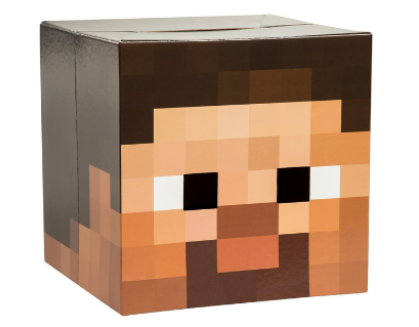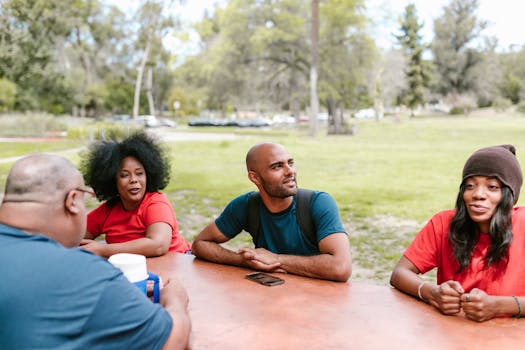Picking up a controller or logging into an online game, you notice who’s on screen and who gets to be the hero. That shapes how you see yourself fitting in.
Diversity in gaming isn’t just a trending phrase. It affects who joins communities, which stories get told, and whose creativity shines through in interactive worlds.
This guide unpacks why representation in gaming matters — not as a buzzword, but as a key ingredient for stories, teamwork, and innovation. Explore examples, checklists, and strategies you can use right now.
Recognizing Who’s at the Table Changes the Game
Players and makers shape gaming culture. When new voices join playtesting or writing, fresh ideas become possible, pushing games and communities to evolve.
Games reflect players and developers. Inviting more backgrounds changes the types of characters and worlds players experience, offering rich new ways to connect inside and outside the game.
Spotting Representation in Character Design
A character’s look, backstory, or role in a game can either reinforce stereotypes or break molds. For example, giving a woman a leadership role in a strategy game offers more than just a visual difference — it changes how players think about power.
In “Overwatch,” Mei and Baptiste aren’t token additions. Their unique skills, personalities, and aesthetics represent cultures rarely seen in action games. This signals to players: you can be central, not just background.
Developers can use feedback from diverse testers early in the design process. One might say, “My community wouldn’t say it like that,” prompting dialogue that sharpens authenticity rather than just ticking boxes.
Case Scenario: Story Choices and Player Identity
When a player can pick a protagonist whose background matches theirs, it builds instant comfort. Imagine a teenager seeing their family’s language appear in dialogue choices; it’s a small moment, but it sticks.
Some narrative RPGs allow selection tied to heritage or gender, sending a message to all players that variety is normal, not an afterthought. Players say, “I finally felt like the story was talking to me, not just at me.”
When players feel seen, they spend more time in the game world and bring friends in. Use these scenarios to advocate for broader options in your own projects.
| Design Decision | Player Impact | Team Approach | Next Step Tip |
|---|---|---|---|
| Multiple Protagonist Origins | Players feel included | Use diverse consultants | List three origin stories to compare |
| Customizable Avatars | Boosts self-expression | Survey actual users | Test one new hairstyle per update |
| Cultural Details in Dialogue | Authenticity builds trust | Hire translators with local context | Flag dialogue for review by heritage experts |
| Inclusive Voice Acting | Expands emotional range | Offer casting calls in multiple languages | Track player feedback on voice packs |
| Partnerships with Cultural Groups | Game lore feels credible | Invite guest writers | Host co-creation events quarterly |
Collaborative Tools Build Wiser Worlds
To develop relevant games, teams turn to collaborative tools and transparent feedback loops. Diverse voices in concept stages lead to fewer one-note characters and richer storylines.
Studios post open calls: “Share what makes your home unique as possible side-quest material.” Such invitations widen the creative pool and reveal unexpected, playable stories.
Feedback Methods for Gaming Teams
Teams gain more when they encourage anonymous idea submission. A developer explained, “We let new voices pitch in a shared document, no names attached. That way, ideas stand on merits, not titles.”
By rotating feedback leadership for each sprint, no single perspective dominates. For example, let an artist run feedback one week, then a QA lead the next. This invites overlooked viewpoints to surface.
- Set up weekly round-table check-ins. This ensures quiet team members share thoughts that improve authenticity and spot bias before launch.
- Use community polls to rate new character designs. This validates which gestures, styles, or accents feel genuine or need refinement.
- Send playable builds to focus groups from underrepresented communities. Fresh testers highlight missing cultural nuance or overplayed tropes quickly.
- Invite streamers from diverse backgrounds to try new content live. Their real-time reactions spotlight strengths and blind spots.
- Adopt “open door” design documents. Anyone can comment – from interns to execs – breaking silos and deepening buy-in.
Transparency lets developers spot when a genre gets too stale or hero lineups feel repetitive. Start documenting comments that spark spirited debate; these often spark breakthrough features.
Checklist for Inclusive Storytelling
Confirm every main character has distinctive goals and dilemmas rooted in their background. This prevents “one-size-fits-all” arcs that dilute the impact of diversity.
Pair each narrative designer with a culture consultant for three sprint cycles. This partnership produces sharper, more effective dialogue and avoids accidental missteps that could alienate players.
- Review all artwork with a mixed group. If in doubt, ask: “Would this depiction surprise or delight, not offend, someone from this character’s community?”
- Host play sessions for friends outside the development team. Listen for confusion, enthusiasm, or discomfort with character choices and worldbuilding.
- Assign every ally or side character a clear, culturally grounded motivation so they avoid blending into the background as generic stereotypes.
- Balance fantasy with respect. If designing mythical creatures, weave in local folklore respectfully, not just visually.
- Respect community feedback. Update content promptly if mistakes are flagged, and share changes openly to build trust.
Finishing narratives with empathy makes a difference. Practical checklists like these transform one-off attempts into consistent, industry-wide progress, deepening trust and excitement with every update.
Diverse Teams Inspire Distinctive Gameplay Patterns
Teams with a range of experiences build mechanics that let more types of players join the fun. This isn’t about quotas; it’s about playful variety that keeps games feeling new.
Mini-Scenario: Combat and Co-op Strategies
A puzzle game team reviews player feedback and hears: “Can we play as characters who solve problems instead of fighting?” The next update includes peaceful negotiation as a winning path.
A multiplayer shooter introduces a healer with rituals drawn from non-Western traditions. Players use emotes never seen in the genre before, encouraging cooperation through acts of care, not just competition.
Designers take notes on which new options draw cheers or confusion. “When people surprise us with unexpected play, we double down on that mechanic.” That’s actionable insight any genre can borrow.
Embracing Unexpected Success with Fresh Character Arcs
Story-driven games sometimes add an unexpected protagonist after fan campaigns. A previously sidelined NPC becomes central, with new quests that address their culture and background. This signals: “We care who you root for.”
Players notice body language cues, language differences, and distinct fashion. “The way my avatar stands and speaks felt totally different — like they truly grew up somewhere else,” one fan blog reads.
Games that track which new arcs get played through to the end know where interest lies. If a story about a rural town outperforms expectations, designers build out that world. Copy this approach: expand what players love, don’t just follow trends.
Progressive Studios Prioritize Representation from Recruitment to Release
Some studios start by reviewing who’s missing in their hiring pipeline and outreach. Others launch diversity-focused internships to “try before you hire,” opening doors for voices typically unseen in dev rooms.
Contrast this with teams who stick to hiring from the same schools or backgrounds. Their work tends toward similar gameplay loops, missing out on energetic innovation that comes from difference.
| Approach | Strength | Drawback |
|---|---|---|
| Diverse Recruiting | New ideas, fewer blind spots | Slower onboarding, ongoing training needed |
| Traditional Hiring | Faster culture fit, lower retraining cost | Risk of homogenous products, blind spots |
| Open Internships | Direct impact, visible pipeline change | Support structure required, not always scalable |
Check which approach your project takes. Test small pilots when uncertain. Highlighting talent with unique backgrounds ensures games reflect the fullness of the player base.
Everyday Analogies Bring Representation Home
Imagine building a neighborhood with just one type of house. Pretty soon, residents lose interest or newcomers feel unwelcome. The analogy fits gaming: sameness closes doors, but variety creates space for belonging.
Consider sports leagues where new players change the style of play. Gaming evolves similarly. When a studio hears, “This reminds me of a game from my childhood, but finally about me,” they know they’ve succeeded.
If a board game night always features the same trivia topics, some players tune out. Introduce unfamiliar topics (“Guess the festival’s origin!”) and suddenly everyone learns and laughs. That’s the spirit of diverse storytelling.
Teams can use these comparisons when pitching diversity initiatives. Say, “Our next game will feel like a festival where everyone finds their favorite food, not just a menu with one entree.” The point sticks.
Concrete Practices that Raise Inclusion in Gaming
- Screen character art with mixed review panels: Spot problematic symbols before launch, ensuring authenticity and reducing risk of backlash.
- Host listening sessions: Let players and creators from specific backgrounds discuss what makes them feel included, guiding deeper world-building.
- Update scripts after cultural consultation: Edit dialogue or story beats for accuracy and resonance, building trust with players over time.
- Create mentorship programs for underrepresented talent: Easy pairing fosters growth and brings unseen perspectives to the creative process.
- Reward developers who add inclusive gameplay mechanics: Make inclusion a key review metric, encouraging innovation at every level.
- Solicit feedback from global communities: Run events in different languages and time zones to ensure a wide net, capturing unseen needs and wishes.
- Give credit to cultural consultants publicly: This shows commitment to excellence and sets industry standards others can benchmark.
When studios act on these practices, they set the tone for the wider industry. Teams stay nimble, creative, and tuned in to a changing player base.
Tracking which practices stick helps refine culture over time. Test one initiative per development cycle, gather honest feedback, and share lessons with the wider team. Gradually, the bar for representation rises, leading to better, more memorable games.
Inclusive Gaming Creates Lasting Community Value
Diverse representation isn’t a one-time checklist. It’s an evolving commitment that shapes every pixel, line of dialogue, and gameplay loop. As games grow, so does their impact on real lives.
Studios that invest in inclusion see not just broader audiences but stronger communities and innovations that leapfrog old patterns. Gamers notice the difference and build fan cultures around it.
Commit to asking hard questions about whose stories get told. Invite feedback, accept criticism, and treat every update as a chance to do better for all players.
Representation in gaming means everyone can find themselves, bring their friends, and build new worlds together. It pays back in loyalty, excitement, and lifelong memories.
Start today with a single step from this guide. Every action toward inclusion makes the next level of greatness in gaming culture more achievable for everyone.

